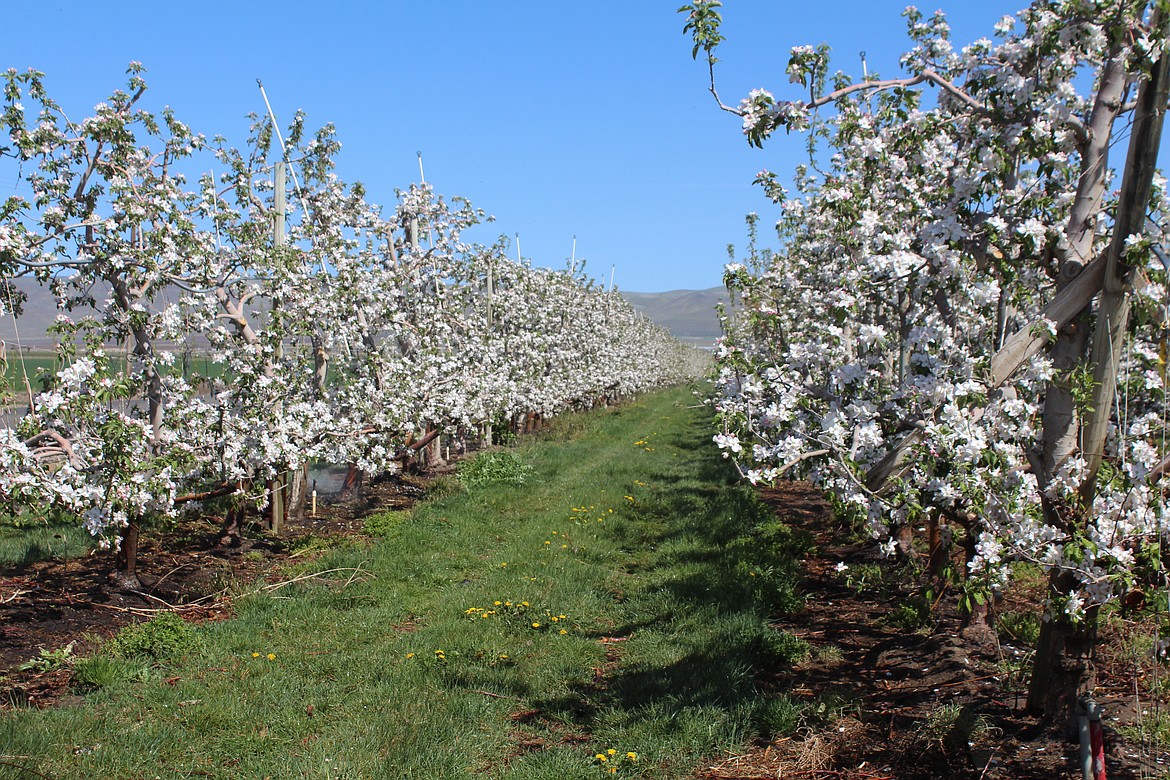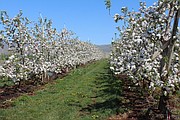‘Guarded optimism’ found in 2023 tree fruit harvest projections
OTHELLO — While there’s a long way to go before fruit is in the warehouse – and in grocery store produce departments – cherry, apple and pear growers might be looking at a pretty good year in 2023.
“There’s a lot of guarded optimism,” said Tim Kovis, director of communications and events for the Washington State Tree Fruit Association.
Cold weather delayed the bloom season, which in turn will delay harvest. Kovis said the estimate on May 18 was that cherry harvest would start about June 15 to 20.
“Which puts us about 15 days later than usual,” he said.
Like the cherries, apple and pear trees bloomed late, but in all three cases when bloom arrived the weather was warm enough that the bees got busy. Exactly how busy is still to be determined. Growers also will be evaluating their orchards to determine where and how much thinning will be required.
“That will be a question for the next few weeks,” Kovis said.
But there’s a lot of time - and a lot of potential for inconvenient rainstorms and windstorms, hail storms, cold temperatures and hot temperatures - between now and harvest.
Washington cherries, Kovis said, should be available to consumers between late June and early August.
“However, a lot could happen between now and then to change this completely,” Kovis said.
The 2021 and 2022 crops provide ample evidence of the things that could happen. A very late spring snowstorm in April 2022 caught cherry orchards at a critical stage and did severe damage to the crop. Luke Tonnemaker of Tonnemaker Farms near Royal City summed it up in August 2022.
“What cherry harvest?” he said.
The summer of 2021 featured record-breaking heat, which in north central Washington meant temperatures approaching 120 degrees. It got so hot that in some orchards cherries shriveled on the trees.
Apples fared a little better in both years, but the hot weather, cold weather and various kinds of bad weather, hailstorms being an example, combined to make the 2022 apple crop one of the smallest in 20 years.
It’s still a little early for a crop estimate for cherries, apples or pears, Kovis said.
Even if Mother Nature cooperates, growers still face a number of challenges.
“Labor is the number one cost driver that our growers face,” Kovis said.
The domestic workforce is smaller and more growers are using federal programs that allow temporary workers, he said.
In addition, changes in state law will affect employee overtime rules. Kovis said the law fully goes into effect in 2024.
Harvest is still ahead, Kovis said.
“We’ll see what it looks like when we get there,” he said.
Cheryl Schweizer can be reached via email at [email protected].




